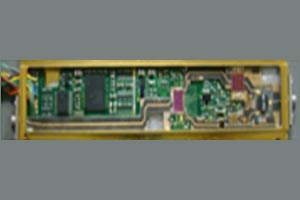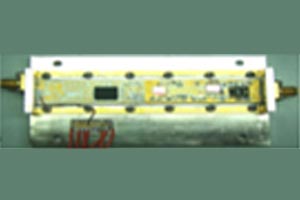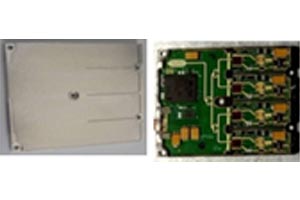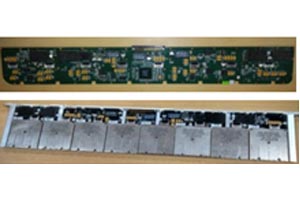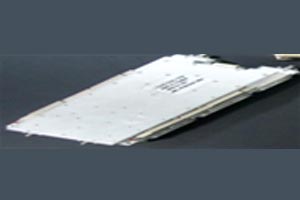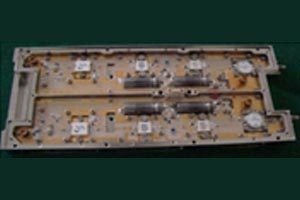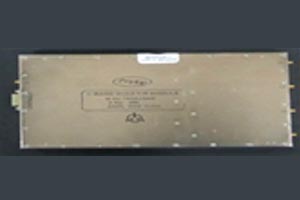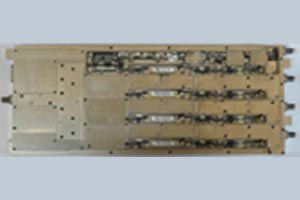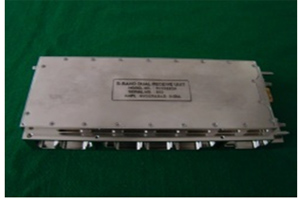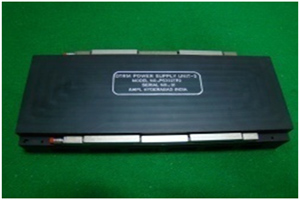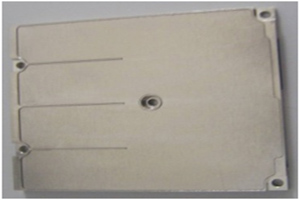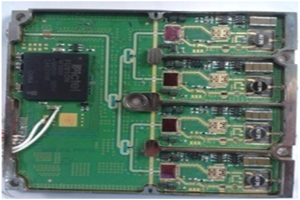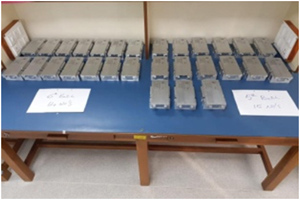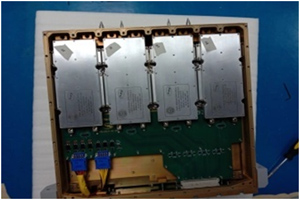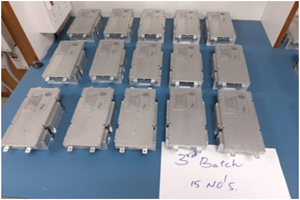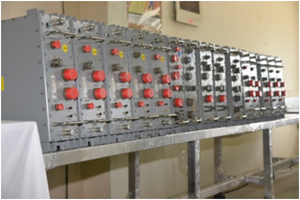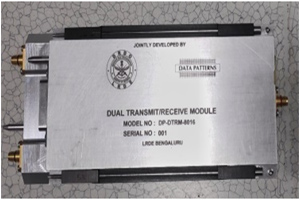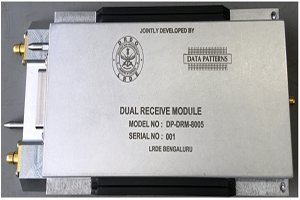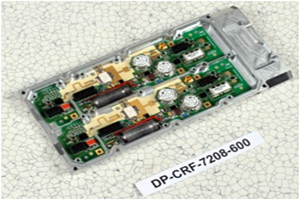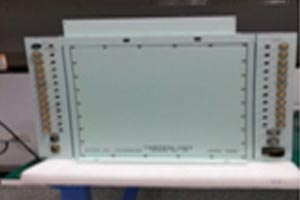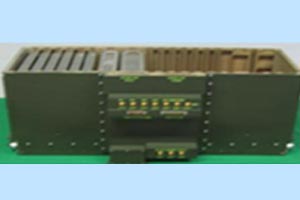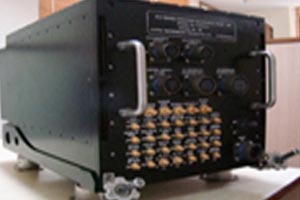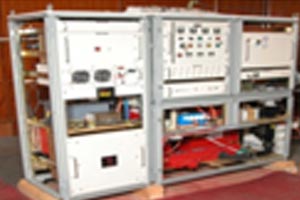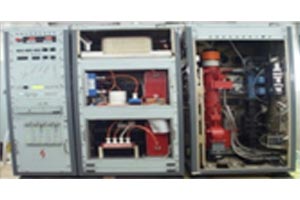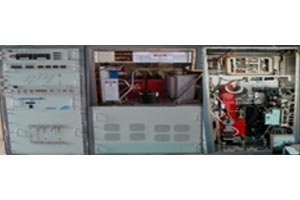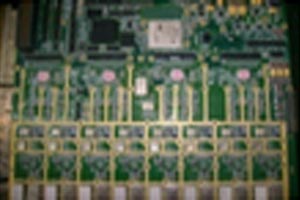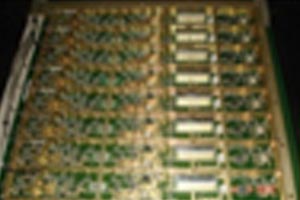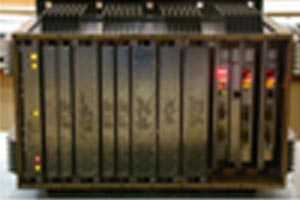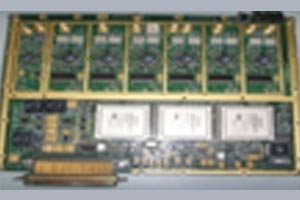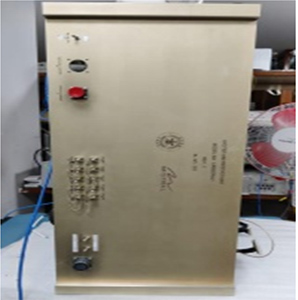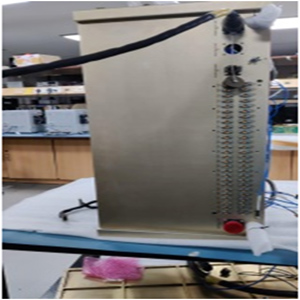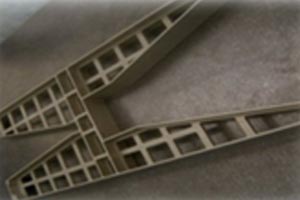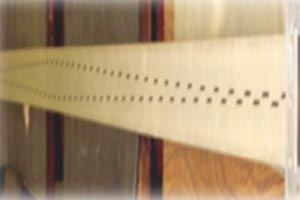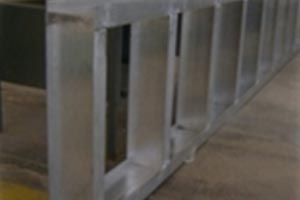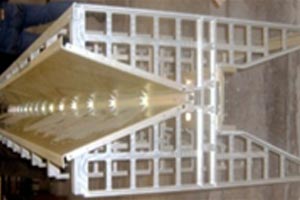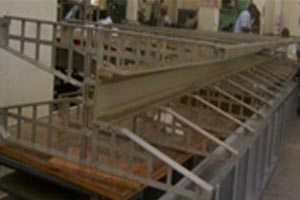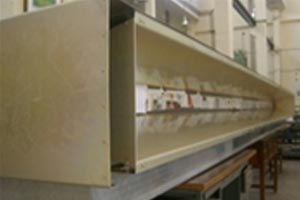Technologies
LRDE has carried out Research &development in the areas of RF, Algorithms & Mechanical and established the various technologies required for development of Radars. Based on these R&D efforts , various Radar subsystems have been developed to realise the Radars indigenously.
Antenna Technology
LRDE has the expertise in developing various types of antenna for different applications.
Reflector Antenna
It has a doubly Curved profile with high Gain and broad bandwidth. Some antennas are segmented in small sizes for man/mule transportability for deployment in mountainous terrain.
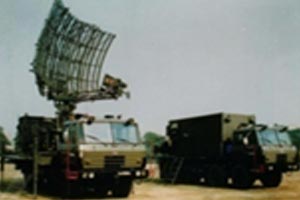
Indra - 1
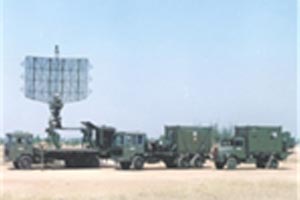
Indra - PC
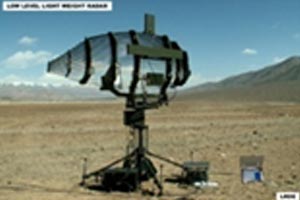
Bharani
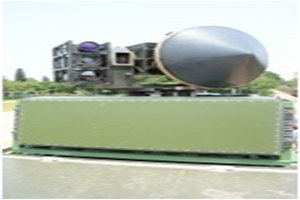
ADFCR
Slotted Wave Guide Antenna
It provides a rugged structure for coupling microwave energy into space with low Side Lobe Level (SLL) Low loss, light weight and high gain. Slotted Wave Guide antennas have been dveloped for various frequency bands and applications.
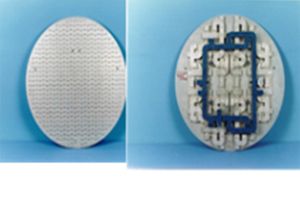
LCA-MMR
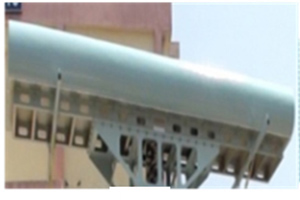
CSR
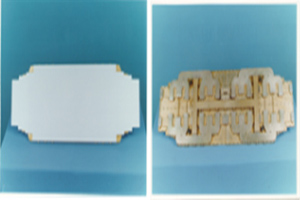
MPAR
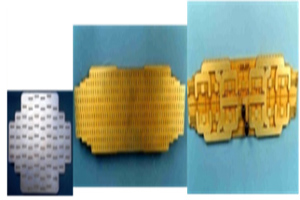
Export
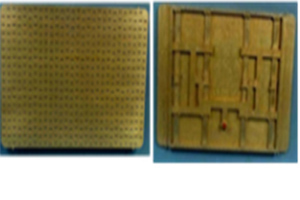
BFSR
Microstrip Patch Antenna
It is a low profile and light weight antenna with superior electrical performance in terms of its bandwidth and pattern characteristics. It is easy to integrate with MMICs and capable of dual and triple frequency operations.
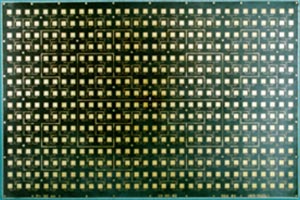
X Band for BFSR
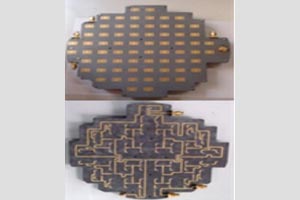
X Band for Missile

Ku Band for SAR for UAV
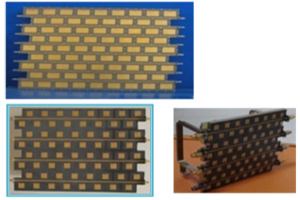
Cavity Backed Antenna
Horn Antennas
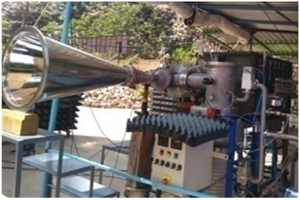
Conical Horn Antenna
Multi-Beam Antenna
It generates different types of beam from same aperture with more volumetric coverage. Very Low Side Lobe pencil beams in azimuth and simultaneously multiple beams during receive mode and shaped beam for required volumetric illumination in transmit mode.

3D TCR
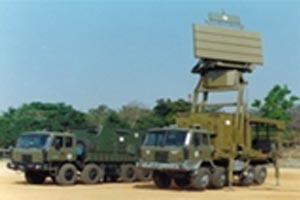
3D CAR
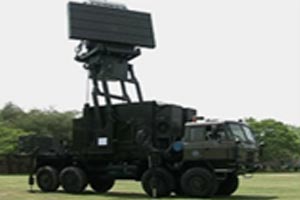
Rohini
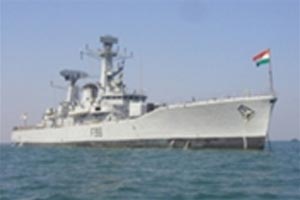
Revathi
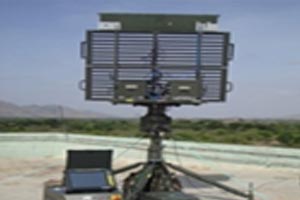
Aslesha
Passive Phased Arrays
They have individual radiators with integrated Phase Control Modules(PCM), distributed architecture, efficient scan coverage, beam agility and high reliability.
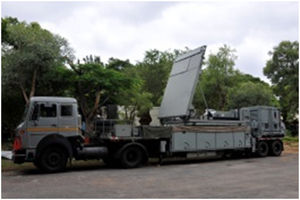
FLR

TLR
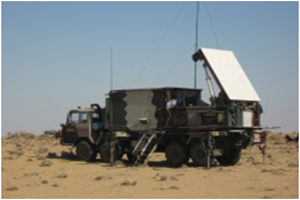
WLR
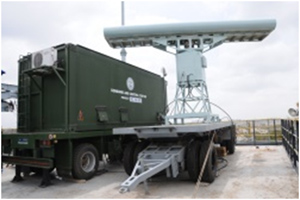
CSR

WLR Mountain Version
Active Phased Arrays
They have integrated radiators with integrated Transmit Receive Modules (TRM)using solid state technology with distributed architecture, efficient scan coverage and high reliability.
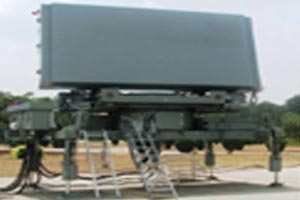
MPR
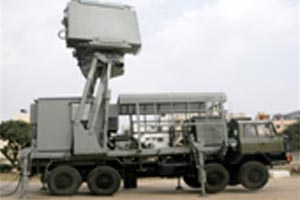
LLTR
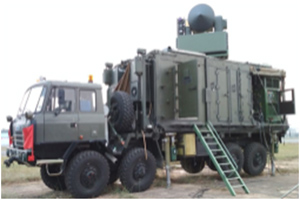
ADFCR

ADTCR
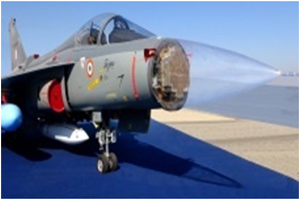
AESAR
TR Module Technology
Silicon (SI) BJT based TRM
Frequency of operation upto C-Band, power output upto 400 W and Class-C operation.
Silicon (SI) LDMOS based TRM
Frequency of operation upto C-Band, power output upto 500 W and Class-AB operation.
Gallium Arsenide (GaAs) based TRM
Frequency of Operation upto Ku-Band, Power output upto 20 W and Class-AB operation.
Gallium Nitride (GaN) based TRM
Frequency of Operation L, S & C-Band, Power output upto 400 W and Class-AB operation.
MPR/ LLTR DRM & DTRM:
AESAR QTRM:
TRM, DTRM and LRU
S Band DTRM and DRM
Exciter / Transmitter / Receiver
Exciter
Frequency Band L to Ku Band with 2 GHz RF Band Width, Programmable frequency spots and Waveforms. Wave form band width covering from 5 MHz to 100s of MHz.
Transmitter
Bands from S to Ka, CFA, Klystron, TWT devices.
Receiver
Designed from VHF to Ku Band, Single, Dual, Quad, Six and Eight channel Analog Receiver and Six and Eight Channel Digital Receiver
Exciter Multi Channel Receiver
Mechanical Engineering
Design & development of Antenna Sub Assemblies, Antenna Assemblies and Pedestals
Antenna Sub Assemblies
Antenna Assemblies
The figures depict stepwise assembly of CSR antenna. The Antenna assembly mainly consists of X and S band waveguide sub-assemblies, Antenna stiffeners, top and side covers.
Pedestals

BFSR
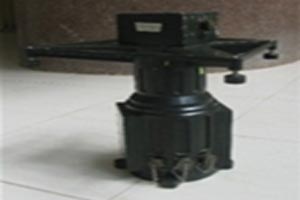
Bharani
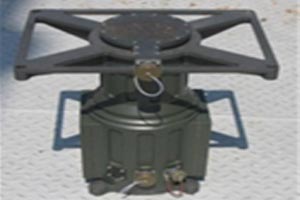
Aslesha
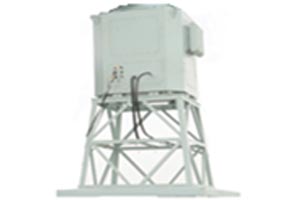
CSR
Pedestals of BFSR, Bharani, Aslesha and Coastal Surveillance Radars are shown here. The pedestals of BFSR, Bharani and Aslesha are compact and lightweight based on Radar requirements. The CSR pedestal is designed for mounting of 600kg CSR antenna and withstand Coastal environment which includes survival in Heavy wind conditions and saline atmosphere.
Pedestals
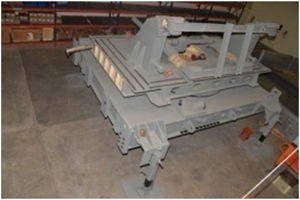
LRR
Power Systems
DG Sets, UPS & Power Distribution
DG Sets : 2 KW to 1500 KW, UPS : Static : 400 KW, Diesel Rotary : 1200 KW, Power Distribution : AC : 20 amps to 2000 amps, DC : 50 amps to 750 amps and Power Supplies : 2 KW to 25 KW
Power Distribution
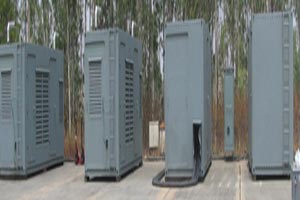
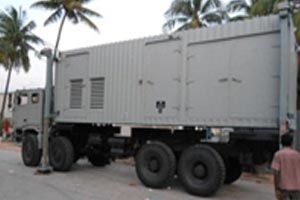
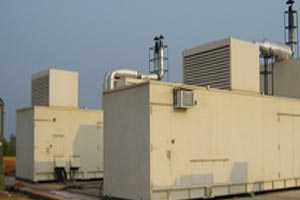

RAPDC
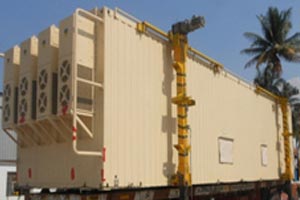
Antenna Power Supplies
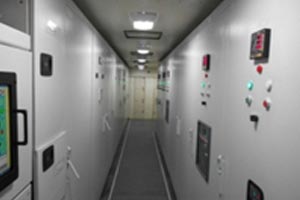
inside view
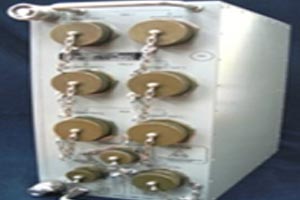

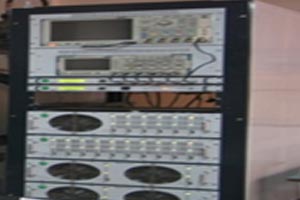
Subsystems

STRU
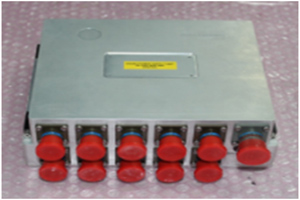
DSGRU

Digital Central Unit
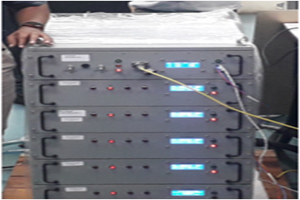
DC Recifier Unit
Subsystems
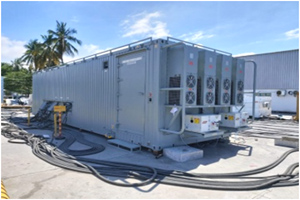
Power System
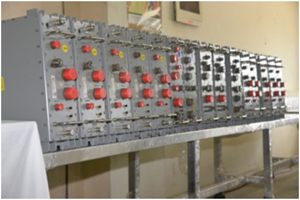
AAU PSU LRU
Products
LRDE has a product database of Radars in various frequency bands, catering for different platforms & functionalities. The Radars have been developed for the requirements of the defence services and homeland security of the Country. The following are the different product types.
- Active Phased Array Radars in L, S, C and X Band
- Passive Phased Array Radars
- 3D Multi beam Surveillance Radars
- Airborne Radars for helicopters / UAVs / Transport / Fighter Aircraft
- Man Portable Light Weight Radars for Homeland Security
- Light Weight Surveillance Radars for High Altitude Operations
- Ground Penetration and Through Wall Imaging Radars for Home-land Security/ Counter insurgency/ Anti-terrorist operations
- Imaging Radars for Airborne Platforms
- Coastal Surveillance and Sea Surface Surveillance Radars on Naval Platforms and harbour operations
- Radars for Ballistic Missile Defence
- Radars for Long / Medium Range Surveillance
- Radars for Surface to Air Missile Systems
- Radars for Weapon Location (against Shells/Mortars/Rockets)
- Synthetic Aperture Radar (SAR)
Completed Projects
Mission Mode Projects
 a. Primary Radar for Airborne Early Warning and Control System (PR for AEW&C)
a. Primary Radar for Airborne Early Warning and Control System (PR for AEW&C)
The Primary Radar for AEW&C is an active phased array radar with a normal detection range of 200 km and an extended range of 300 km. It is a multi-mode early warning radar with Electronically Scanned Active Array Antenna (ESA). It has been mounted on an Executive Jet class (Embraer) aircraft for carrying out air borne surveillance. The radar has been inducted by Indian Air Force.
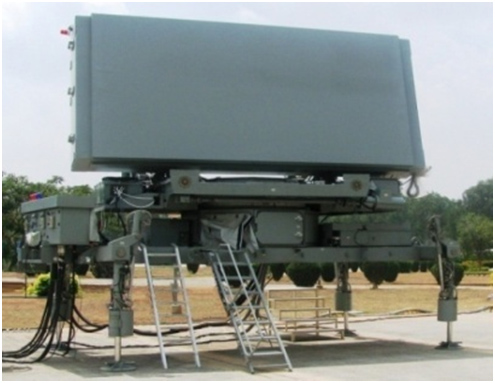 b. Medium Power Radar (MPR) – Arudhra
b. Medium Power Radar (MPR) – Arudhra
Medium Power Radar (Arudhra) is a fully active aperture rotating 4D multi-beam multifunction phased array radar with staring mode of operation also. It has an instrumented range of 400 km. The radar has a detection range of 300 km. It also has a mode for detection and tracking of low RCS, high speed and highly manoeuvringtargets. . The system is based on state-of-the-art active aperture phased array with Digital Beam Forming (DBF) technology. The scalable architecture enables development of a family of radars for various applications.It is a semi static installation. Design, Development and User trials have been completed and accepted for induction by IAF.
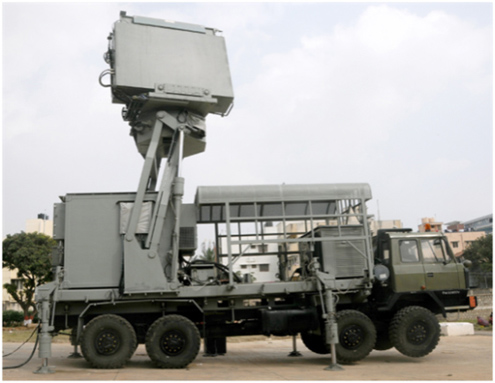 c. Low Level Transportable Radar (LLTR) – Ashwini
c. Low Level Transportable Radar (LLTR) – Ashwini
The Fully Active Medium Range Surveillance radar, Ashwini is a vehicle mounted ground based rotating Active Phased Array Radar System for air space surveillance to detect and track air targets, under hostile EW operational environments. The flexible architecture is a reliable and adaptable technology for multiple applications – early warning for air defence sensor at airbases. The Radar has advanced technologies like Solid State Transmit/Receive (T/R) Modules, Digital Receivers, Programmable Signal Processor, Digital Beam Former. The advanced software algorithms, multiple high speed processors, and state-of-the-art digital technologies have made the radar an effective but user friendly sensor providing airspace awareness to the Commanders during peace and war time. The radar is fully programmable from the local Operator Work Station(OWS).Design, Development and User trials have been completed and accepted for induction by IAF.
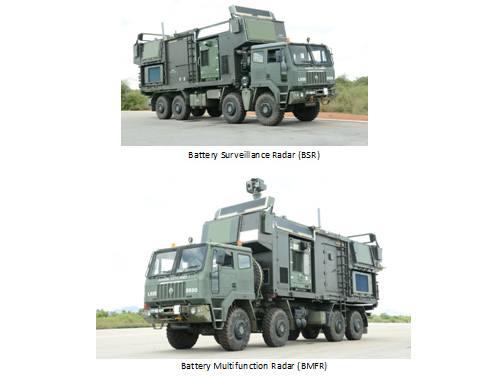 d. Radars for Quick Reaction Surface to Air Missile (QRSAM)
d. Radars for Quick Reaction Surface to Air Missile (QRSAM)
The QRSAM system is required to provide air defence cover to mechanised columns on the move. The QRSAM system requires a Battery Surveillance Radar (BSR) for surveillance and a Battery Multifunction Radar (BMFR) for fire control. Both BSR and BMFR are active phased array radars with four antenna arrays covering the entire 360o in azimuth and 0 to 60o in elevation. Both the radars are mounted on8x8 HMV and have on board power source and cooling system. On-the-move surveillance and tracking performance have been established. Development has been completed and User Trials are in progress.
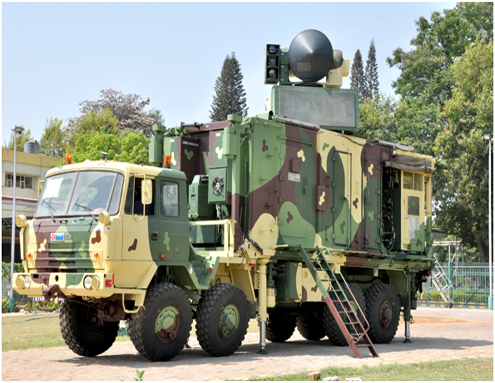 e. Air Defence Fire Control Radar (ADFCR) – Atulya
e. Air Defence Fire Control Radar (ADFCR) – Atulya
Atulya, in conjunction with Anti-Aircraft Guns, forms a Ground Based Air Defence System whose main purpose is effective point defence against all air threats at short and very short ranges, during day &night and under all weather conditions and also in the presence of Enemy Jamming (ECM). The complete system is easy to deploy, operate and maintain. The system essentially comprises of 3D - Search Radar, separate dedicated target Tracking Radar, Electro-Optical Sensors (TV & TI camera) for passive 2D-Tracking and Laser Range Finder(LRF) for ranging, Gun Control Unit and integral Power Supply System mounted on a single High Mobility Vehicle.Design and development and a major portion of the User Trials have been completed.
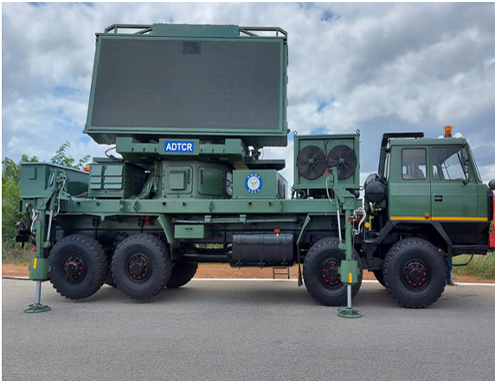 f. Air Defence Tactical Control Radar (ADTCR)
f. Air Defence Tactical Control Radar (ADTCR)
Air Defence Tactical Control Radar (ADTCR) has been developed for Army AD as a successor to the existing INDRA and P19 radars for surveillance, detection, tracking and friend/foe identification of aerial targets and transmission of data to multiple Air Defence command posts/ weapon systems. The system is based on state-of-the-art active aperture phased array with Digital Beam Forming (DBF) technology. ADTCR system, including the rotating surveillance radar along with its integral power supply source, Target Designation Unit (TDU), communication equipment and the operator shelter have been mounted on two High Mobility Vehicles. The system has been developed by reusing the available electronics from the already proven Proto radar, which was developed as part of MPR project.Development has been completed and the ADTCR is ready for User Trials.
Technology Demonstration Projects
 a. Synthetic Aperture Radar (SAR) for UAV
a. Synthetic Aperture Radar (SAR) for UAV
SAR with Ground Moving Target Indicator (GMTI) capability is an important sensor in UAV for imaging, surveillance, and reconnaissance. The imagery and the GMTI from the SAR is capable of detecting slow moving targets such as armoured tanks, convoys, trucks etc. Two imaging modes of operation are available viz., Strip map and Spotlight. Strip map mode is capable of covering large swath with coarse resolution and spotlight mode provides better resolution for a smaller swath. Design and Development have been completed and the radar has been evaluated on TAPAS UAV.
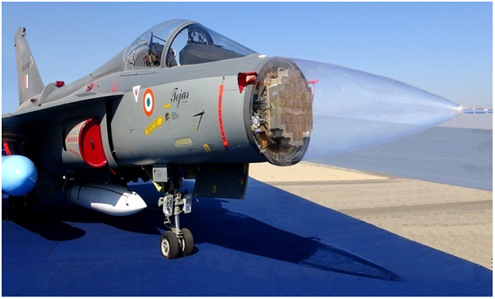 b. Active Electronically Scanned Array Radar (AESAR) – UTTAM
b. Active Electronically Scanned Array Radar (AESAR) – UTTAM
In Project UTTAM, a fully engineered,qualified & deployable state-of-the-art Active Electronically Scanned Array Radar (AESAR) has been developed indigenously with scalable architecture that can be adapted for various types of fighter class of airborne platforms. Core competence required for AESAR such as Active Aperture Array Unit (AAAU), Primary Power System (PPS) & Exciter Receiver Processor (ERP), the most complex and critical sub-systems of AESAR, have been established along with production base through Indian industries for quick realization of AESAR with platform oriented architecture suitable for all combat aircraft. The radars have been flight tested on LCA platform for different modes.
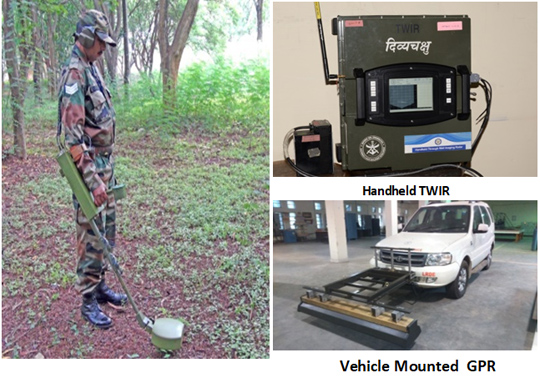 c. Ground based radars for Low Intensity Conflict (LIC) – DivyaChakshu
c. Ground based radars for Low Intensity Conflict (LIC) – DivyaChakshu
The Ground Penetration Radar (GPR) and Through Wall Imaging Radar (TWIR) have been developed for the paramilitary and police forces against Low Intensity Conflicts. GPR will help detect and locate the buried hazardous objects like anti-personnel/ anti-tank mines, Improvised Explosive Devices (IED), munitions, Unexploded Ordnance (UXOs), etc. buried below the soil.
The TWIR will help detect, locate and monitor humans behind walls during hostage rescue operations. Radars have been developed and ready for User evaluation. The radars have been demonstrated to CAPFs and some State Police Forces.
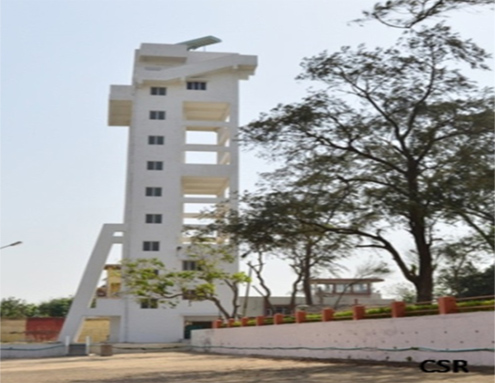 d. Coastal Surveillance Radar (CSR) for Integrated Coastal Surveillance System (ICSS)
d. Coastal Surveillance Radar (CSR) for Integrated Coastal Surveillance System (ICSS)
ICSS comprises of a chain of sensors, viz., ground based microwave radar, Forward Looking Infra Red (FLIR) Sensor, Electronic Support Measures (ESM) and optical sensors. CSR is a surveillance system capable of working day and night and in all weather conditions. All these sensors have been integrated through a fusion centre where the data coming from the sensors and other resources are filtered, correlated and fused to produce the best estimate of the position, velocity, classification and identification of all maritime traffic in the area of interest. CSR has been developed and deployed in Balasore area as part of Coastal Surveillance Network.
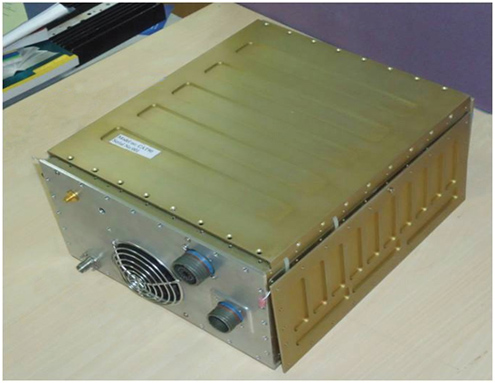 e. Compact Airborne Transmitter (CAT)
e. Compact Airborne Transmitter (CAT)
Transmitters for airborne applications need high spectral purity which can be achieved with High voltage power supply with precise voltage regulation. Technology has been established for realization of Compact Airborne Transmitter (CAT) using the latest technology in the area of Power conversion, high voltage, high frequency transformers, intelligent controllers and complex modulation schemes having better reliability with remote operation capability. In the Project, an indigenous airborne transmitter in Ku Band, which can be used for SAR for UAV applications, has been developed and realised.
R & D Task
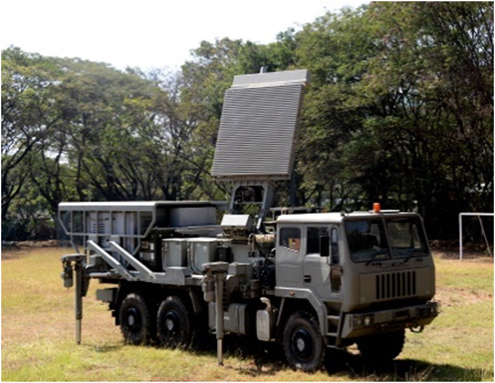 f. Aslesha Mk II
f. Aslesha Mk II
The Product has been realised by BEL with 100% funding. Design & performance Guarantee is by LRDE. It is a two vehicle configuration (Sensor Vehicle and Power Supply Vehicle). It uses a Semi-distributed Active Phased Array Technology withGaN T/R modules. The radar has an improved range and height coverage compared to the Aslesha Radar and capable of Operation at high altitudes.
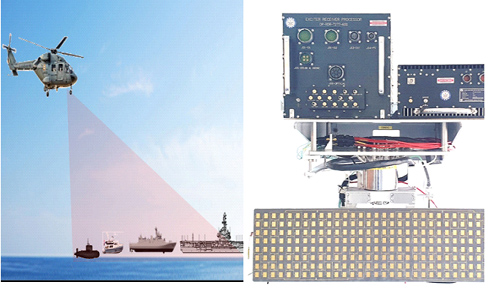 g. NUH Radar
g. NUH Radar
LRDE is developing a lightweight and cost effective Maritime Surveillance Airborne Radar for evaluation by the Indian Navy to facilitate nomination of the radar as Buyer Nominated Equipment (BNE) for the Indian Navy’s Naval Utility Helicopter (NUH) Procurement program.
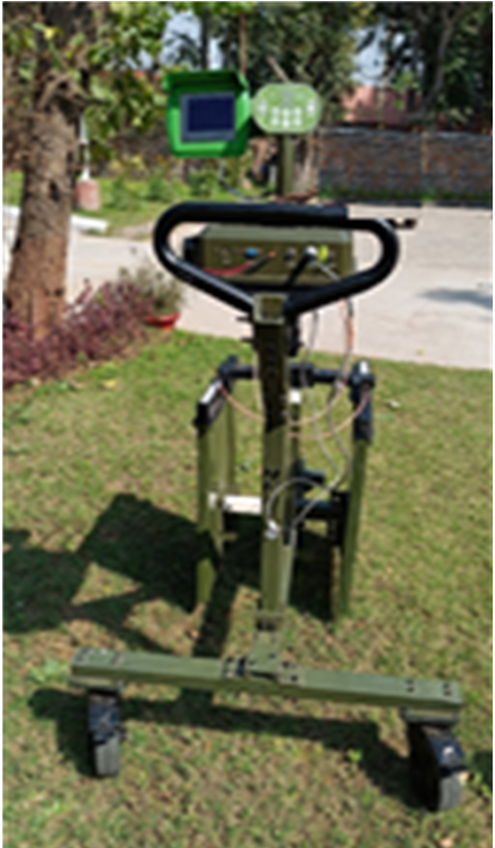 h. Tunnel Detection Radar:
h. Tunnel Detection Radar:
This radar is based on Ground Penetration Radar (GPR) technology developed by LRDE with Stepped Frequency Continuous Wave (SFCW) based waveform generation. Hand-held GPR has been reconfigured to meet requirements of BSF. Operating Frequency, Antenna, Firmware of GPR have been modified to meet the requirements of Tunnel detection. The proto-type has been realised on a push cart structure for easy mobility on terrains prevalent in border areas.
Support to M/s BEL
 i. WLR (Mountain Version)
i. WLR (Mountain Version)
Light weight WLR for Mountains has been configured on two 6x6 vehicles with100% Funding and Realisation of First Off Production Model (FOPM)is by BEL and Performance Guarantee by LRDE. Order will be placed by Army after completion of trials.
Achievements
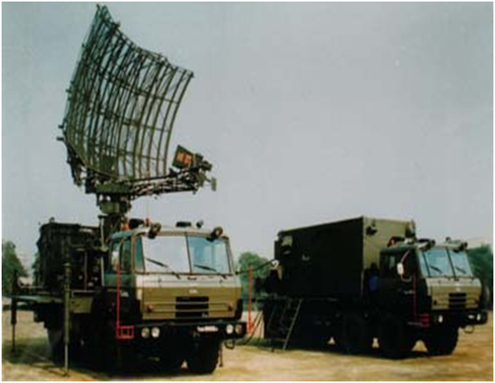 a. Indian Doppler Radar - I (INDRA-I)
a. Indian Doppler Radar - I (INDRA-I)INDRA-I was developed to serve the Army as tactical surveillance radar for point and area defence or as gap filler for the air defence, especially against aircraft threat at very low altitudes.
Users : Indian Army and Indian Air Force
Status : The system have been inducted into Service with Indian Army & Indian Air Force.
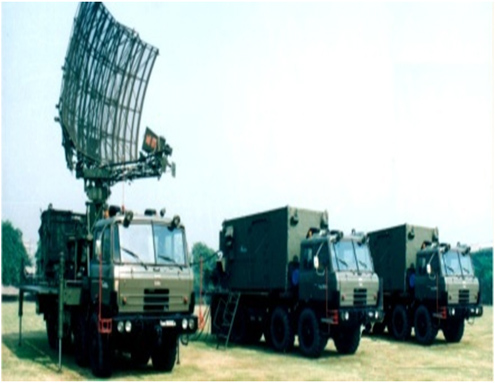 b. Indian Doppler Radar – Pulse Compression (INDRA-PC)
b. Indian Doppler Radar – Pulse Compression (INDRA-PC)
INDRA Pulse Compression radar was developed to meet Air Defence requirements of the Air Force. It is a low flying target detection 2D radar. The radar mounted on three wheeled vehicles, is transportable by Rail, Road and Air.
Users : Indian Air Force
Status : The system has been inducted into Service.
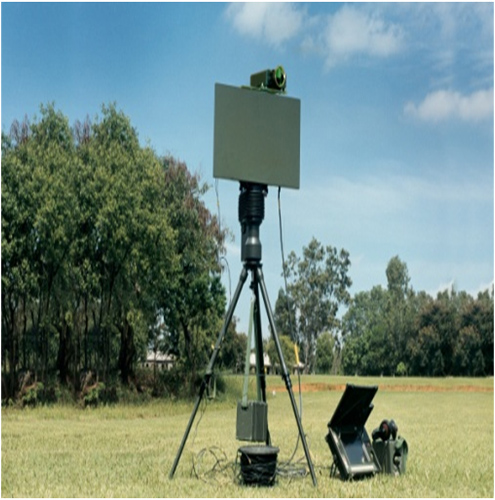 c. Battle Field Surveillance Radar – Short Range (BFSR-SR)
c. Battle Field Surveillance Radar – Short Range (BFSR-SR)
The Battle Field Surveillance Radar - Short Range (BFSR-SR) is a man portable, battery operated Surveillance Radar developed for the Indian Army. The radar has been developed for deployment in the forward areas with capabilities to detect, track and classify variety of moving ground surface targets.
BFSR-SR - a reliable sensor for day and night operations in all weather conditions - has made surveillance of forward areas effective in 24 X 7 environment and has firmly established self-reliance in that class of radar. The radar can be carried in three man-packs.
The radar is a simple, easy to use and user-friendly surveillance e-sensor, in that an Infantry soldier can install and effectively put the radar into operation within five minutes. It has been built to be a reliable surveillance and tracking radar to search a specific sector to detect and perform track while scan for multiple targets like crawling man, single / group of walking men, light / heavy vehicles. Audio and visual aids help identify and classify a target.
The radar is also a potential ground based e-sensor for Border Security Force, Coast Guard and Police for surveillance of designated areas. The radar would be a very cost-effective perimeter surveillance sensor for airports, large industrial complexes and other infrastructure.
Users : Indian Army and BSF
Status : The radar has been inducted into Service in large numbers.
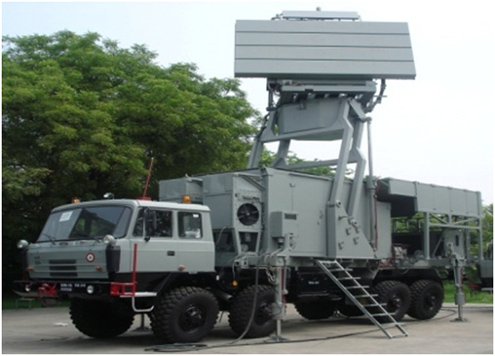 d. 3D Surveillance Radar for Indian Air Force – Rohini
d. 3D Surveillance Radar for Indian Air Force – Rohini
The 3D Surveillance Radar, Rohini is a ground based mechanically scanning, pulse Doppler radar for air space surveillance to detect and track air targets with reliability, even under hostile EW operational environment. The radar has advanced technologies like digital receiver, and programmable signal processor providing high resolution, accuracy, response and information availability. Advanced software algorithms, multiple high speed processors, and state-of-the-art digital technologies have made the radar an effective but user friendly sensor providing 24 x 7 airspace awareness to the Commanders during peace and war time.
User : Indian Air Force
Status : Systems have been inducted into Indian Air Force
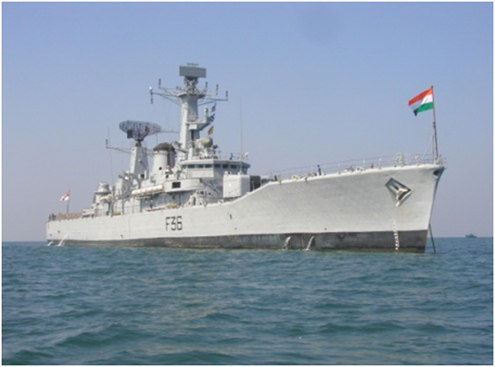 e. 3D Surveillance Radar for Indian Navy – Revathi
e. 3D Surveillance Radar for Indian Navy – Revathi
3D Surveillance Radar, Revathi is a ship borne mechanically scanning pulse Doppler radar for 3D air space and sea surface surveillance. The radar is capable of providing reliable detection/tracking air targets and sea surface targets even under hostile EW operational environment. The radar is of state-of-art technology. The flexible architecture system is reliable and adaptable, for multiple applications – early warning for air and sea surface defence weapon system, defence sensor onboard ship. The radar has advanced technologies like multiple simultaneous beams on receive, digital receiver, programmable signal processor providing high resolution, accuracy, response and timely information availability.
User : Indian Navy
Status : Systems have been inducted into Indian Navy
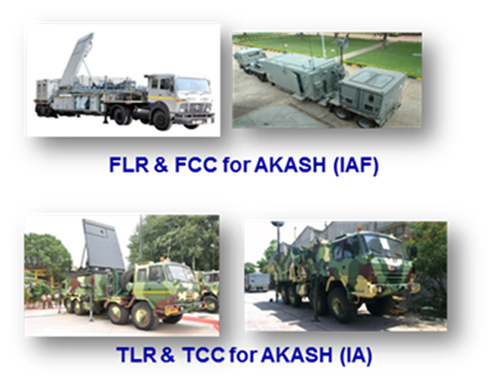 f. Akash Weapon System for Indian Army and Indian Air Force
f. Akash Weapon System for Indian Army and Indian Air Force
It is the primary sensor at the battery level for Akash surface to air missile weapon system which is an air defence system for the Indian Army and Air force. The radar has the capability to perform extensive search, track multiple targets and missiles, and to command and guide own multiple missiles concurrently. The multi function Radar replaces multiple radar requirements like surveillance, tracking and guidance. The radar supports autonomous and group mode operations of Akash weapon system.The Radar system is configured on two vehicles – Sensor vehicle and Command post. For Air Force, it is configured on trailer with prime movers and for Army it is on Tatra high mobility vehicles.
Users : Indian Air Force and Indian Army
Status : FLR&FCC have been delivered to Indian Air Force. TLR&TCC have been delivered to Indian Army.
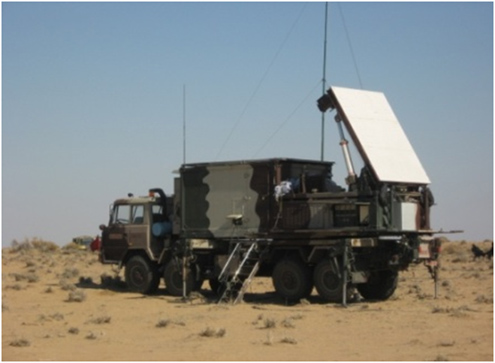
g. Weapon Locating Radar (WLR)
WLR is a coherent, electronically scanned phased array radar. The radar automatically locates hostile artillery, mortars and rocket launchers and tracks friendly fire to locate the impact point of friendly artillery fire to issue necessary corrections. The radar is designed to detect projectiles with small cross section across the battle space horizon, and has the capability to handle simultaneous fire from weapons deployed at multiple locations. The fence concept of placing the beam grazing the covered air space makes it difficult for hostile projectiles to escape without detection. The radar helps neutralize hostile guns in the tactical battle space and helps own guns for effective shelling on designated enemy targets.
The radar has been developed for Indian Army to substitute the imported system and acts as a force multiplier for Artillery.
User : Indian Army
Status : Inducted by Army Artillery.
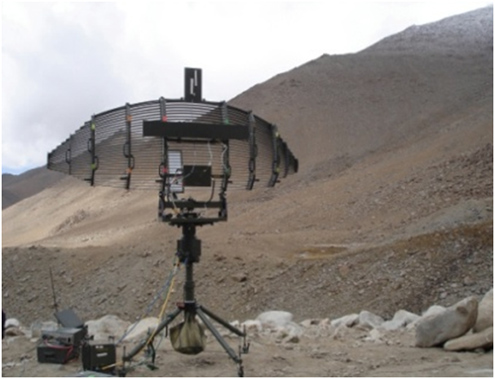
h. Low Level Light Weight Radar (LLLR) for Army Air Defence-Bharani Mk I
Low Level Light Weight Radar is a light weight, battery powered and compact sensor, mounted on a quadripod, which provides 2D surveillance solution to alert Army Air Defence Weapon Systems mainly in mountainous terrain against hostile aerial targets like UAVs, RPVs, helicopters and fixed wing aircraft flying at low and medium altitudes. The radar can be transported by vehicles, animal transport or group of men or as heli-slung loads. It can be dismantled into packages to facilitate quick installation and re-location in mountainous terrain. It will act as an early warning provider to air defence weapon systems employed to provide protection to vulnerable areas or vulnerable points in the mountains by the Indian Army.
User : Army Air Defence
Status : Systems have been inducted in to Indian Army
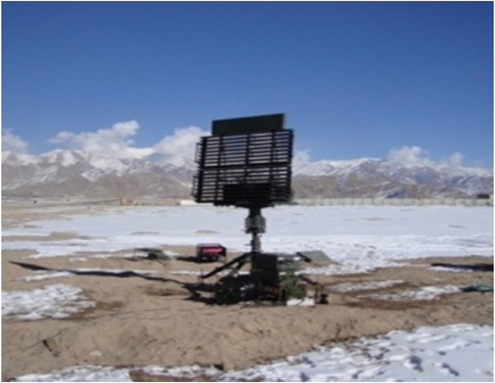 i. 3D Low Level Light Weight Radar – Aslesha Mk I
i. 3D Low Level Light Weight Radar – Aslesha Mk I
It is a multi-faceted ground based 3D low level light weight surveillance radar for deployment in diverse terrains, like plains, deserts, mountains, and high altitude regions. It can detect and track heterogeneous air targets, including helicopters, fighters and UAVs at low and medium altitudes. It provides accurate range, azimuth and height information for each target with electronically steerable multi-beam technology in elevation.
User : Indian Air Force
Status : Systems have been inducted into Indian Air Force
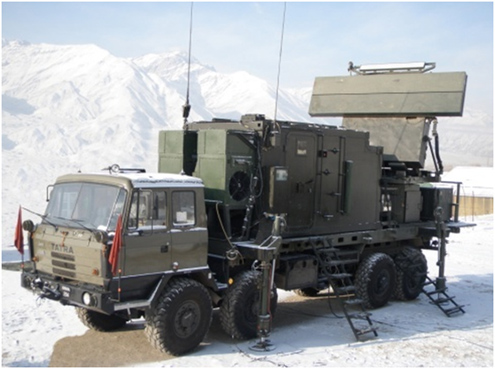 j) 3D Tactical Radar (3D TCR)
j) 3D Tactical Radar (3D TCR)
The 3D Tactical Control Radar (TCR) is a stand-alone medium range, all weather 3D surveillance Radar for detection and identification of aerial targets, transmission of pertinent data to Target Data Receiver (TDR). The radar is capable of Track-While-Scan (TWS) of airborne targets, subject to line-of-sight clearance and radar horizon. The antenna is mechanically rotated in azimuth to provide 360 deg, all around, coverage. The Radar is of state- of-art technology with highly optimized structure in terms of accuracy and weight together mounted on a TATRA VVL vehicle
User : Indian Army
Status : Systems inducted into Indian Army.
 k. Maritime Airborne Patrol Radar (XV 2004)
k. Maritime Airborne Patrol Radar (XV 2004)
XV 2004 is a coherent, multi-mode, pulse-compression, surveillance Radar System that can search and detect sea surface and airborne targets. The System's design features help minimise effects of rain and sea clutter on Radar performance. The Radar has additional weather and beacon modes. The system has been developed for maritime patrol on Naval Advanced Light Helicopter and can be fitted on fixed wing platforms as well. The multi platform portable radar has the potential for use by all the three Services and Coast Guard and has established airborne radar technology in the country.
User : Indian Navy
Status : User associated technical trials completed on Naval ALH.



